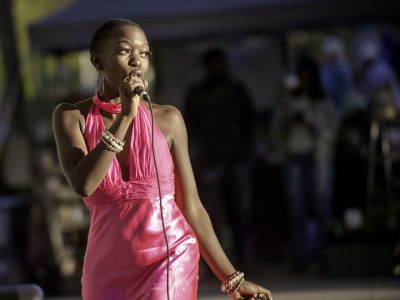by Sayaka Matsuoka
Warlords sauntered down the halls of the hotel while schoolgirls gathered in circles. Catwoman slinked around the corner as trainers carried Pokemon in their backpacks and Disney princesses sat regally in scattered chairs. Grumpy Cat even made an appearance.
The Marriott in Winston-Salem last weekend was anything but an ordinary hotel. A rainbow of imaginative minds gathered there for the fourth annual Triad Anime Convention. Everything from video-game rooms equipped with old and new consoles to a manga library and vendors with trinkets and costumes made up the convention. The main event, however, was the cosplay.
Outside the hotel, people dressed in elaborate costumes trudged up and down Fourth Street with brightly colored hair, crafted armor, staffs and swords.
While manga and anime have long been popular in the United States, the art of cosplay — or dressing up to play different fictional characters — is a relatively new phenomenon. Originating in Japan, cosplayers imitate anime and manga characters but many also adopt the identities of figures from video games and comics as well. While the inspiration behind it is respected as an art form, cosplaying itself may not immediately scream “art” to those who don’t understand the painstaking process that goes into it.
People like convention-goers Jana Ribley and Fatima Said have been practicing cosplay for years. Both are in their twenties and were dressed as characters from the hit Nickelodeon show “The Legend of Korra”, the sequel to “Avatar: The Last Airbender.” Ribley wore the blue fur-lined jacket of a character named Varrick while Said portrayed Varrick’s female assistant, Zhu li, wearing a purple skirt suit and black tights. Ribley spent two weeks making her costume while Said spent two days. But Ribley and Said both said they had spent longer periods from three weeks to a month making previous costumes.
“Everything is taken into account,” Said explained. “Cosplaying develops life skills like learning to apply makeup and style hair. You learn to take everyday things and make them into art.”
While the median age of those in attendance may have been closer to Said and Ribley’s, there were also those who were cosplaying for the first time like 7-year-old Marion Towle.
She came dressed from head to toe in brown and white as Eevee, a popular fox-like Pokemon. According to her father, Ben Towle, the event last year inspired Marion to dress up for this year’s convention.
“Her mom made her ears and boots and we ordered some of her other clothes online,” Ben Towle said. As a comic artist, his profession revolves around art and design and he can see how cosplaying could be considered art.
“Art is whenever someone puts their soul into creating something, uses problem solving and creative solutions,” said Towle.
Other parents like Brandi Rothrock sat on the sidelines while her daughter and her friends, dressed in colorful garb, posed for pictures. Rothrock has been making her daughter’s costumes for four years and believes that cosplaying provides a positive outlet. Rothrock once spent three weeks making her daughter an Ariel costume from scratch. It took a whole week just to sew two wigs together.
“She’s in her element here,” Rothrock said, as she watched her daughter.
Her sentiment seemed to be felt by all who attended the convention, which began March 13.
Sophie Alman, who portrayed another Pokemon, Dialga, said that she is new to the art. Dressed in blue with lightning bolts shooting out of her head and feet, Alman carried a sign that read, “Dialga used roar of time. It’s super effective!”
She had only been cosplaying for six months and although her Dialga costume only took a week to make, her longest costume took three weeks of constant work.
“The purpose of any art is to communicate with others and cosplaying allows people to become things they admire,” Alman said. “It gives them an outlet for expression.”
Later in the day, Andrew Ainsworth said he altered an existing costume complete with a frilled collar, eye patch, garter belts and a pirate hat but said he previously took two months to create a more intricate outfit.
“Cosplaying is a combination of imitation and self-expression,” he said. “It gives you the opportunity to take something you love and make it your own, but if you aren’t passionate about it, it won’t be good. You have to love it.”
And love it they do.
Join the First Amendment Society, a membership that goes directly to funding TCB‘s newsroom.
We believe that reporting can save the world.
The TCB First Amendment Society recognizes the vital role of a free, unfettered press with a bundling of local experiences designed to build community, and unique engagements with our newsroom that will help you understand, and shape, local journalism’s critical role in uplifting the people in our cities.
All revenue goes directly into the newsroom as reporters’ salaries and freelance commissions.





Leave a Reply